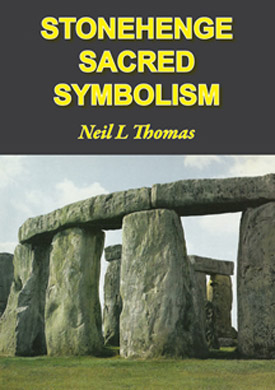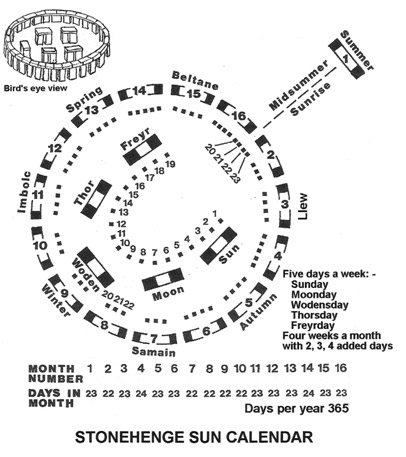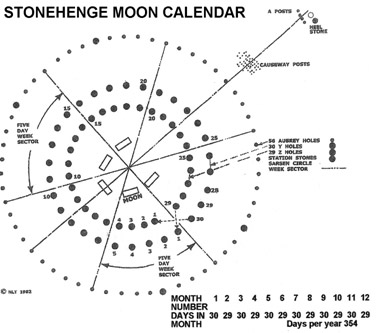Stonehenge Sacred Symbolism
 Stonehenge Sacred Symbolism by Neil L Thomas reveals the Bible's Old Testament tale of the
disappearance of Sodom and Gomorrah actually occurred about 2250 BC. Founded
upon scientific atmospheric data, glacier ice cores and petroleum industry
records, see why India, China, the Americas, Britain, Malta, Egypt, Palestine,
Jordan, Sumeria all suffered starvation, cold and drought conditions about the
same time. Empires collapsed and humanity reverted to a basic frugal existence.
Stonehenge Sacred Symbolism by Neil L Thomas reveals the Bible's Old Testament tale of the
disappearance of Sodom and Gomorrah actually occurred about 2250 BC. Founded
upon scientific atmospheric data, glacier ice cores and petroleum industry
records, see why India, China, the Americas, Britain, Malta, Egypt, Palestine,
Jordan, Sumeria all suffered starvation, cold and drought conditions about the
same time. Empires collapsed and humanity reverted to a basic frugal existence.
The sea-linked peoples of the north-west: Ireland, Britain and western Europe have much in common. Pre-historic deities, legends and myths, Sun and Moon calendars, feet fathoms and furlongs, all are revealed in Stonehenge Sacred Symbolism.
Purchase at Amazon.com or Amazon.co.uk
Stonehenge Sun Calendar
The pre-historic peoples of Ireland, Britain, Denmark, Sweden, Norway, Iceland, France and Germany exhibit similar elements of ancient beliefs and a Sun calendar: sixteen months, four weeks a month, five days a week, 365 days a year. Days could have been named for the ancient deities Sun, Moon, Woden, Thor and Freyr.
We continue to mark eight annual events in the ancient Sun calendar:
Two solstices = Summer & Winter
Two equinoxes = Spring & Autumn
Llew = Harvest
Samhain = Halloween
Imbolc = Lmbing
Beltane = Mayday
Stonehenge Moon Calendar
The Stonehenge Moon calendar featured two rings of pits dug into the subsoil. Back-filled with white chalk lumps, thirty Z Holes formed the outer ring, twenty-nine Y Holes formed an inner ring.A Moon month is 29½ days, 59 days in two months. From the centre, imaginary lines drawn between the trilithons form six segments equal to six weeks of five days, perhaps given the same day names as the Sun calendar. Alternate months had only four days in the fourth week. Six counts around fifty-nine Y and Z Holes equalled 354 days, a twelve-month Moon year.
Literacy & Numeracy
Ireland's ancient monuments at Knowth and Newgrange c.3500 BC show the earliest comprehensive writing and arithmetic abilities in mankind's history, thirty-six or so symbols employed in petroglyphs demonstrated the Sun and Moon calendars. Counts of thirty-three had symbolic meaning. The world's four major religions continue to employ thirty-three to imply or infer a sacred state or an ultimate heavenly situation.Right-angled triangles, Pi or ? = 22/7, odd numbers and their symbolism were employed in the north-west during the fourth millennium BC. The first millennium BC Greek philosophers Pythagoras, Archimedes and Euclid probably inherited their mathematical knowledge from the Stonehenge people of ancient Britain.
Avebury, England
England's largest ancient monument at Avebury was built about 2500 BC. Three times thirty-three massive stones enclosed a fertility shrine, a justice court, a good health symbol. Four entrances crossed the encircling ditch and embankment. These features are mirrored in the Icelandic Creation Of The World myth told in written form about 1200 AD.The Long Man of Wilmington
Linear measures, the Celtic foot, the short yard and faethm [fathom] the furlang [furlong] were known throughout history and in Stonehenge times. The prehistoric Long Man of Wilmington figure on a hillside in Sussex, England is thirty-three faethms equal to one furlang from head to toe. The first cricket game pitch was ten faethms long. Baseball and cricket have this common origin on the south coast of England.Neil L Thomas
Author Neil L Thomas, a chartered engineer in the Australian oil and gas industry, made field trips to Ireland, Wales, England, Scotland, the Netherlands, Denmark, France, the Middle East, Egypt, India, China, Canada and the USA. Years of research led to an understanding how the myths and folklore of north-west European peoples complement prehistoric monuments, the evidence fits together like a jigsaw.Boyne Valley Private Day Tour
 Immerse yourself in the rich heritage and culture of the Boyne Valley with our full-day private tours.
Visit Newgrange World Heritage site, explore the Hill of Slane, where Saint Patrick famously lit the Paschal fire.
Discover the Hill of Tara, the ancient seat of power for the High Kings of Ireland.
Book Now
Immerse yourself in the rich heritage and culture of the Boyne Valley with our full-day private tours.
Visit Newgrange World Heritage site, explore the Hill of Slane, where Saint Patrick famously lit the Paschal fire.
Discover the Hill of Tara, the ancient seat of power for the High Kings of Ireland.
Book Now
Home
| Newgrange
| Knowth
| Dowth
| Hill of Tara
| Fourknocks
| Loughcrew
| More Places
| Labyrinths
| Local Info
| Art Works
| Articles
| Images
| Books
| Links
| Boyne Valley Tours
| Contact

